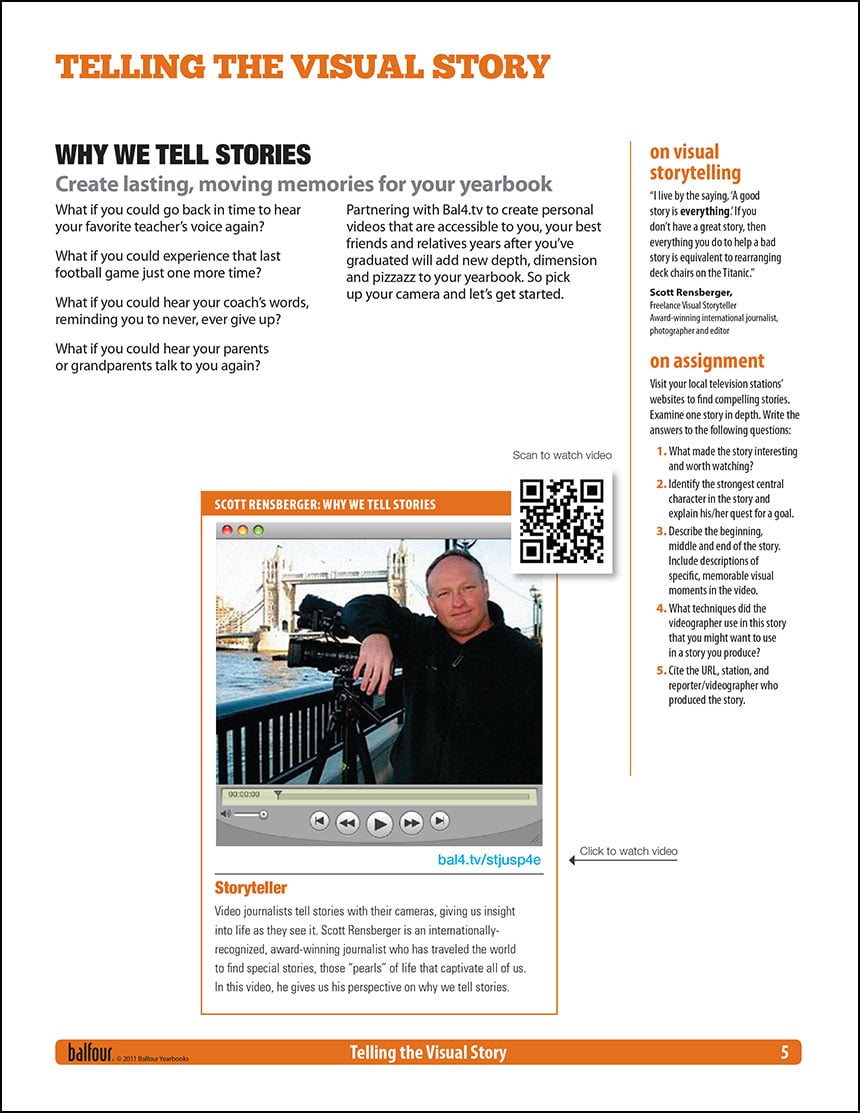
Scott Rensberger, a freelance visual story teller and award-winning international journalist, said, “I live by the saying, ‘A good story is everything.’ If you don’t have a great story, then everything you do to help a bad story is equivalent to rearranging deck chairs on the Titanic.”
Yearbook staff members need to become visual and verbal storytellers. To model this, have them visit local television stations’ websites or the CBS “Sunday Morning” website to find compelling stories. Each student will examine one story in depth and write the answers to the following questions:
- What made the story interesting and worth watching?
- Identify the strongest central character in the video and explain his/her story.
- Describe the beginning, middle and end of the story. Include descriptions of specific, memorable visual moments in the video.
- What techniques did the reporters and videographer use in this story that you might want to use in a story you write & photograph?
- Cite the URL, station, and reporter/videographer who produced the story.
Every student in your school has a story. Your staff members’ challenge is to get people talking, relating their unique experiences, situations, histories, challenges and triumphs.

Did you know?
Balfour has a 23-lesson video curriculum, that’s adaptable for any teaching situation. See a sample lesson here.

